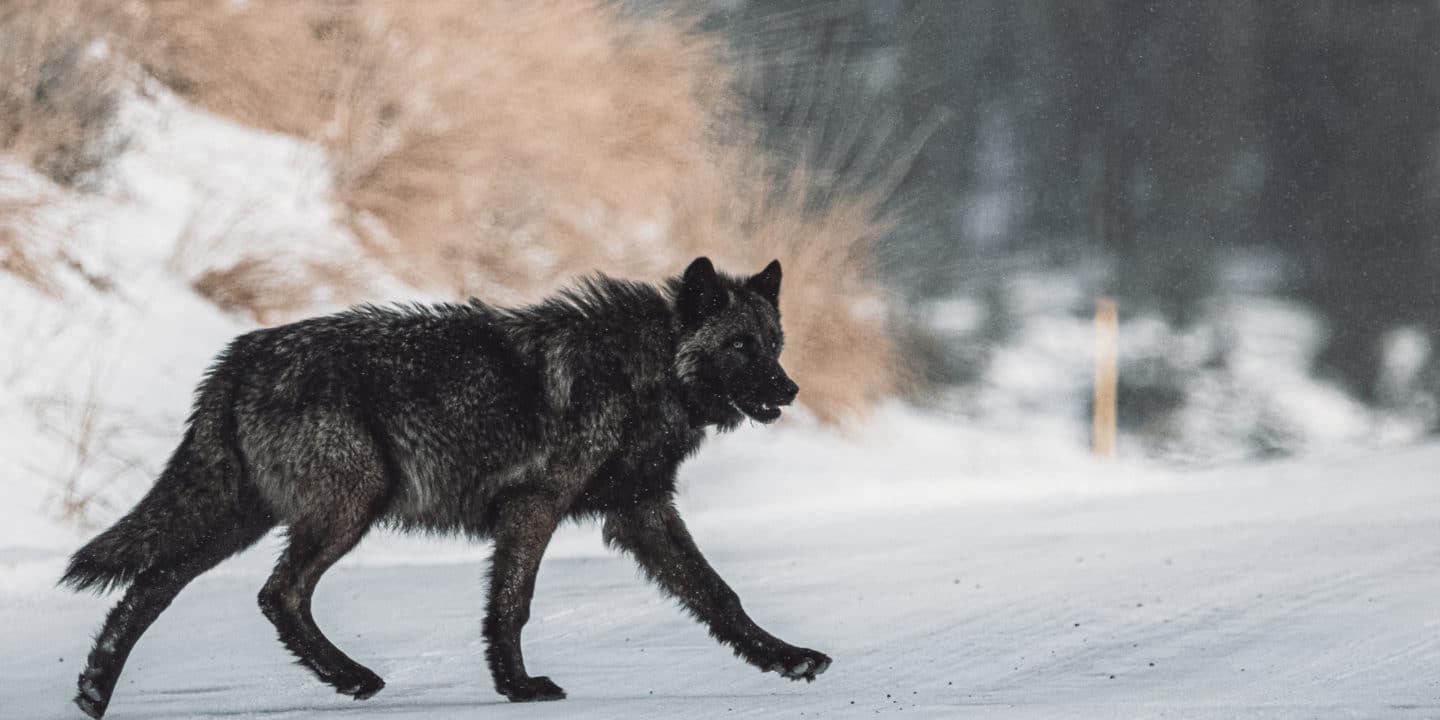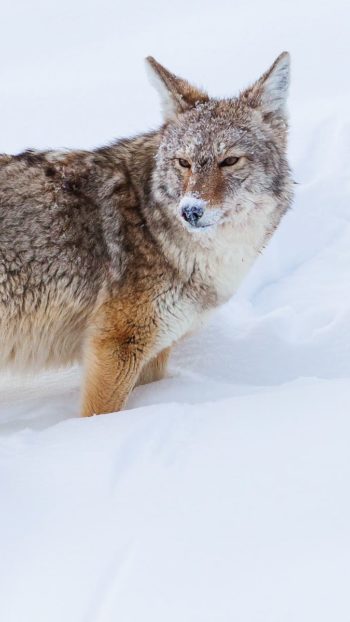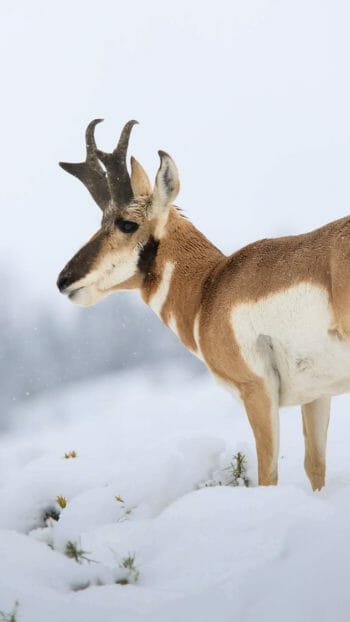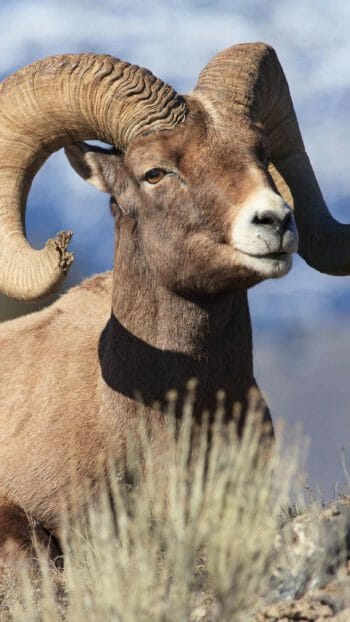Wolves are a major draw for tourism to the Greater Yellowstone Ecosystem, particularly to Yellowstone’s Northern Range, a region hallmarked by giant mountains, sweeping valleys and magnificent river systems where the gray wolf has, since its reintroduction in 1995 after extirpation in the 1920’s, found a homeland reminiscent of its hereditary and genetic memory from the last 20,000 years.
It is worthwhile for those of us who currently seek to view and understand these dynamic animals to look deeply at the heart of their story, to understand their place not only on the landscape but within our consciousness (mostly of European descent and memory). Why does the wolf invoke such curiosity in us, such amazement at wildness, of predator and prey relationships, of something within their particular ways that feels somehow reminiscent of our own? Why have we, as Americans, sought also to destroy this creature and eliminate its effect on our world? Consider these words from Dan Flores who chronicles the story of the wolf in relation to European infiltration of the Americas, and ponder what this being and its presence might illustrate for us not only around wildlife and their rightful conservation, but also the impact they have on a greater human story of conquest over the natural world.
This excerpt comes from a “Wild New World”, where Flores attempts to concentrate the grand story of human evolution from its beginnings, always in relationship to its natural world and wildlife, towards the settlement of the Americas by native explorers from Eurasia and many thousands of years later the European “re-discoverers”. This piece revolves specifically around the psychology of predators, and the wolf, and how our interaction with this species has a deep root in our collective experience.
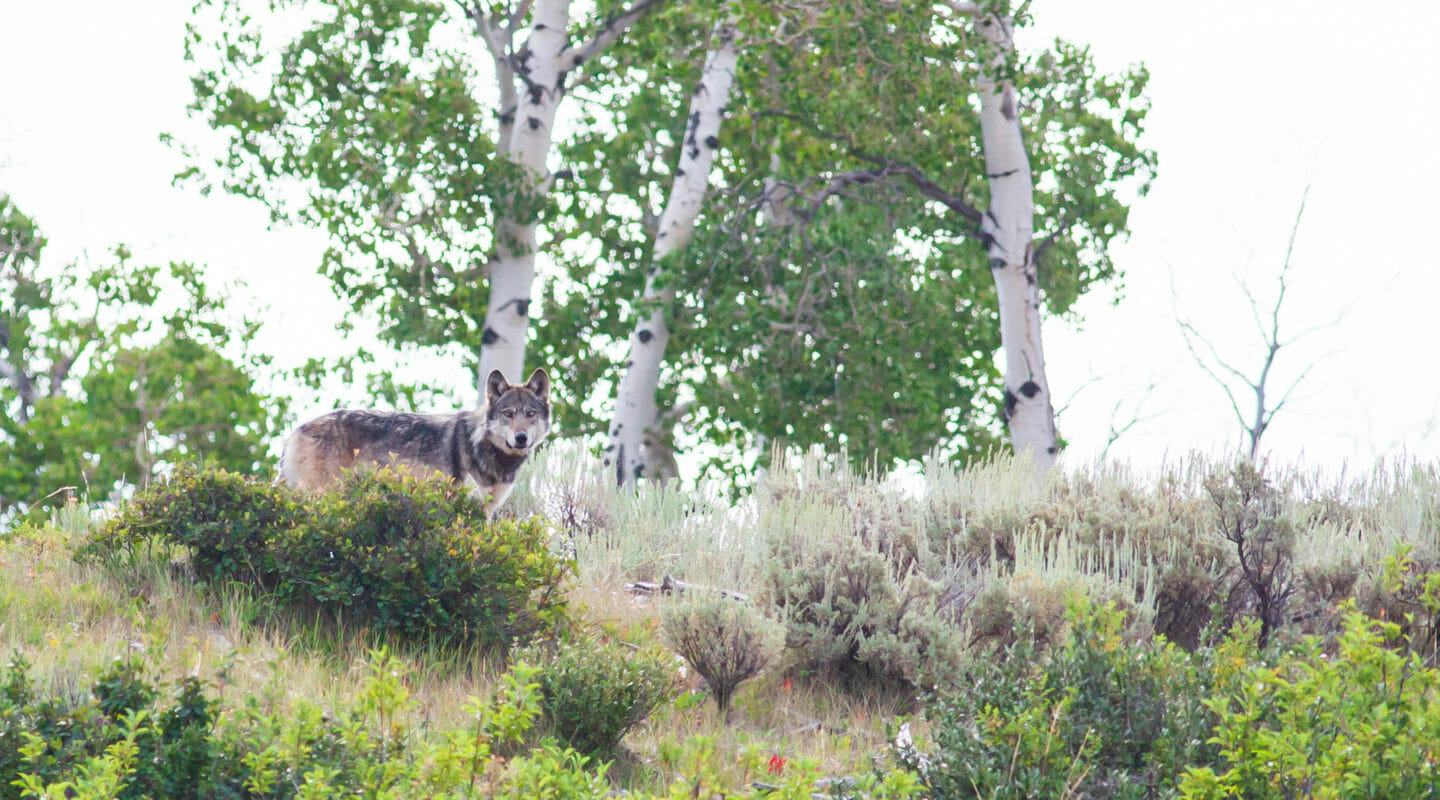
As chronicled in brief by Dan Flores in Wild New World…
“By the time he was writing New England’s Prospect, William Wood (1500’s) was documenting this old continent’s new face as the Eden of Animals. The distilled source for John Locke’s famous line, “In the beginning, all world was America” was at hand. But the true irony was that this America was not a survival of the primeval world, as Locke and other Europeans assumed, but a place created by their own arrival and the biology that accompanied them.
Wood made a specific comment about a very particular animal that would have caught the attention of every European, for the abundance of this one in America gave all potential settlers pause. This was the wolf, which struck Old Worlders as a very special problem. True enough, these seemed somewhat different from wolves in Europe’s fairy tales and memories. In America “it was never known yet that a wolf ever set upon a man or woman. Neither did wolves seem interested in English horses or cattle, although they did sometimes attack pigs, goats and calves.
But wolves (as they found in America) in such numbers were unexpected. From the very beginning Europeans fantasized about the volume of deer, moose and bears they could exploit if only something could be done about the wolf. Wood may have been the first to express this sentiment; “It is not the be thought into what great multitudes all these animals might increase were it not for the common devourer”. Innocent of future notions like coevolution, ecology or keystone predators, Wood was just the first of many to imagine how wonderfully splendid a wolf-free America might be. But in the 1630’s New England he despaired. When it came to wolves, there was just the little hope of their utter destruction. Wood’s judgement about his fellow settler’s and their descendant’s ability to deal with wolves turned out to be a spectacular miss.
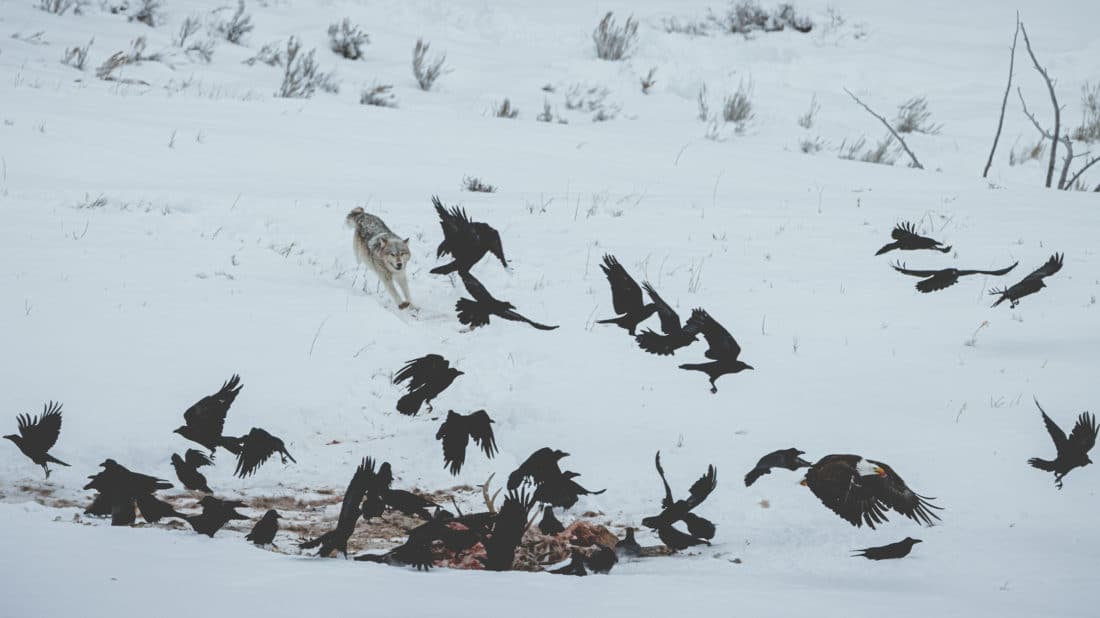
The wolf, then, from the start of colonization because a special animal for Europeans. Colonists who came from France of Spain still knew wolves firsthand, but England’s last wolves hadn’t lasted beyond the 1400’s. Virginians and New Englanders were living among wolves for the first time in their lives, and as Wood implies, they didn’t like it in the least.
For a people who at one time lived among wolves, Old World settlers seemed to know precious little about them. Their knowledge of predators came from their herding-culture religion, but handed-down folk knowledge also shaped their understanding. While Abenakis and Narragansetts (Native groups in the Northeast) admired wolves for their bravery, hunting skills, and devotion to mates and packs, Europeans saw the same wolves as degenerate cowards, the very definition of evil in nature. Old stories of werewolves, memories of the human-wild animal therianthropes from the Paleolithic, still circulated in colonial times and may have fed a suspicion that wolves were avatars of a bestial nature in humans. All the folk stories, all the biblical passages about “ravening” wolves must have been confusing when America’s wolves showed no aggression toward people. That didn’t matter. Fresh encounters with wolves in America lent the canids a reputation of “cowardliness” but didn’t quell the hatred. That hatred matters now, because it is difficult to look back on this history without feeling moral outrage about how the unsuspecting animals must have experienced colonialism.
Real wolves bore little resemblance to the animals in the stories Old Worlders brought to America. Devoted to social life, wolves spent their lives in family packs of related animals led by high-status breeders, or alphas. Wolves avoided breeding with close kin, so a pack’s grown pups eventually moved on in search of mating opportunities. While they had individualistic personalities, like young humans, wolf pups learned from their elders and were much influenced by pack culture. After absences they greeted by standing on their hind legs and “rallying”, and they interacted with a remarkable range of body language and facial expressions. When they howled, with heads thrown back and muzzles elevated, they sang a timeless symphony of the continent. For wolves, howling was a way to express emotional states. Howling was also contagious and enabled them to recognize other wolves from the harmonic structure of their songs.
Wolf natural history and human natural history readily explain why tamed wolves because our first companion animals. Our social lives and ecological niches were similar. Wolf societies were configured much like hunter-gatherer clans. In both instances the leadership tended to be matriarchal. While the alpha female wolf directed the packs’ movements, the larger males, especially those between about two and five years old, were primary hunters. Wolves mated in February and bore four to five pups in April, and the pack, often including experienced wolves as old as ten or eleven, raised and educated the alpha female’s pups, plus any born to lower-ranking females. The population of wolves in a given region rested on food availability. That didn’t just determine pup survival, it also meant that packs competed with other for prime prey territories. Before Old Worlders arrived in face, the main mortality in wolves came from other wolves.
Europeans imagined America’s wolves as vicious, efficient monsters of the kill, routinely murdering prey merely for fun. In the real world a very different process was playing out. Although they have strong jaw muscles, the geometry of wolves’ long muzzles actually inhibits their bite force. And chasing down and neck-wrestling big animals armed with hooves and antlers is dangerous in the extreme. So wolves, like us, went for low-hanging fruit. They scavenged animals already dead when possible. Highly perceptive about cost-benefit, on the hunt they tried for fawns and young animals or injured or old ones. Their strategy was to test prey in search of those least dangerous, the ones that offered the least resistance. Even then, among the whitetail deer wolves were primarily hunting in the eastern and southern forests of colonial America, their chase success could dip as low as 10 percent.
As for murdering for fun, sometimes wolves caught deer yarded up in winter snows or caribou on their calving grounds and killed several in a flurry. But their practice was to return and feed until the remains were gone. Nonetheless, stories of sport or surplus killing circulated about wolves as something common and criminal enough for punishment. What the new settlers really wanted was for America’s wolves to disappear. Even before William Wood fantasized about a wolf-free America, the Massachusetts colony passed the first wildlife law in American history. It was a one-penny bounty on wolves, the first extermination attempts of a great many to come.
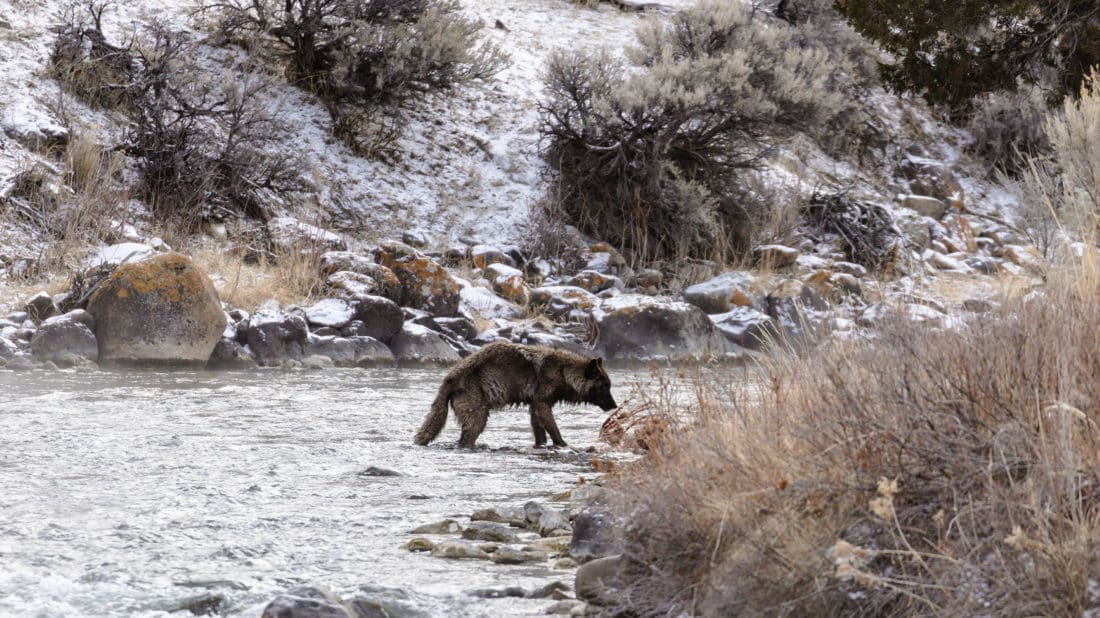
The aspiring naturalist John James Audubon left the future a chilling account of how wolves experienced the new war Europeans were about to level at them. This was in 1814, when the attitudes of Americans toward wolves had hardened into a rare viciousness. Spending the night with a farmer on the Vincennes Trace, Audubon accompanied his host to a capture pit that held three wolves. The wolves’ sin? They had attacked the farmer’s loose stock in a country by then bled of almost all its deer, bison and elk. From his colonial forebears this farmer had learned exactly how to respond. Climbing into the pit, he one by one severed the wolves’ hamstrings with a knife, “exhibiting as little fear as if he had been marking lambs,” Audubon wrote. Then he dragged the wolves out so his dogs could tear them to pieces.
Audubon helped him pull up the largest, a black male wolf in the prime of life. Audubon descried this beast of Old World horror stories as “motionless with fright, as if dead, its disabled legs swinging to and fro, its jaws die open, and the gurgle in its throat alone indicating that it was alive”. Petrified and in shock, the black wolf offered no resistance. It took the dogs less than a minute to stop the gurgling and extinguish its life.”
— From Wild New World by Dan Flores
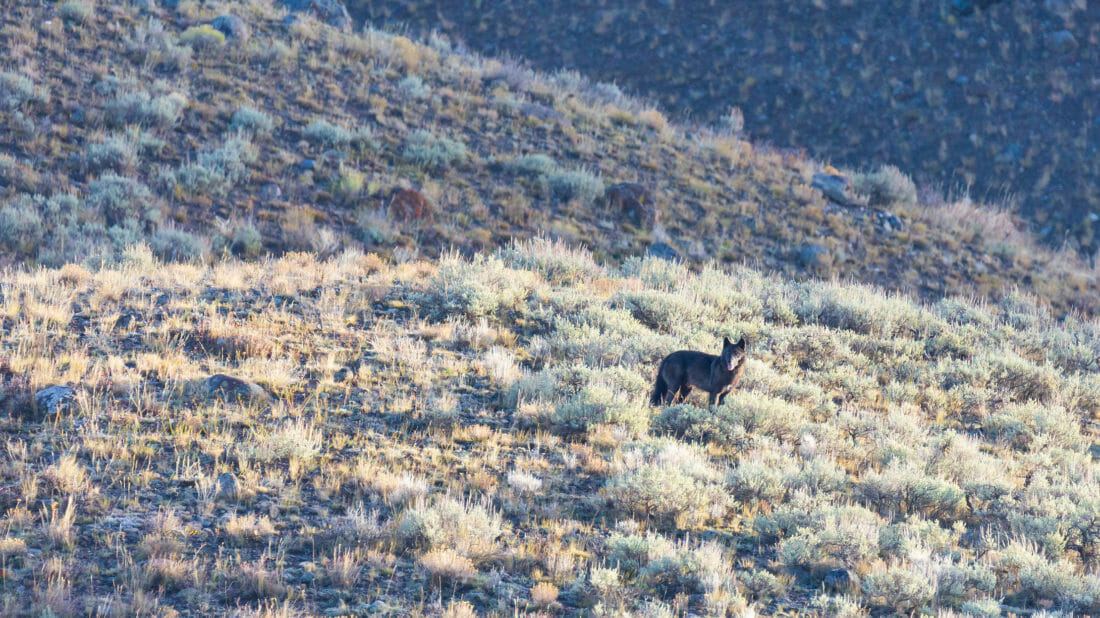
This account of the early European-American’s experience with wolves is valuable to us in the present day as we witness current political views, ideologies and management over our wolf populations in Wyoming, Montana and Idaho. Why do we vilify the wolf? Why do we pursue and attempt to eradicate the wolf? What about its nature threatens our sense of sovereignty over the land, over our livestock, pets and hunting interests? Why must we compete with this animal when we know we, with our advanced ammunitions, will prevail?
And if we prevail, what might we lose?
Wild New World
by Dan Flores
The Epic Story of Animals and People in America
Dan Flores is A. B. Hammond Professor Emeritus of Western History at the University of Montana. A distinguished historian of the American West, he is the author of the best-selling books Coyote America and American Serengeti. He lives in Santa Fe, New Mexico.

